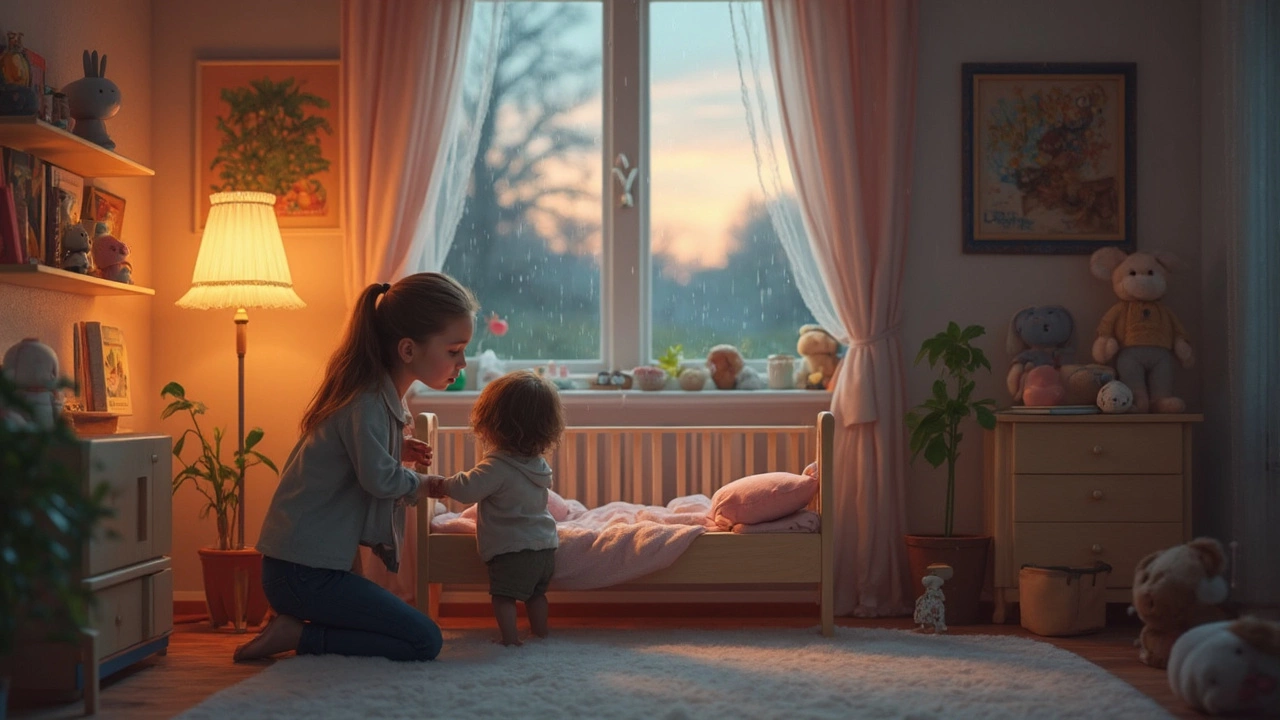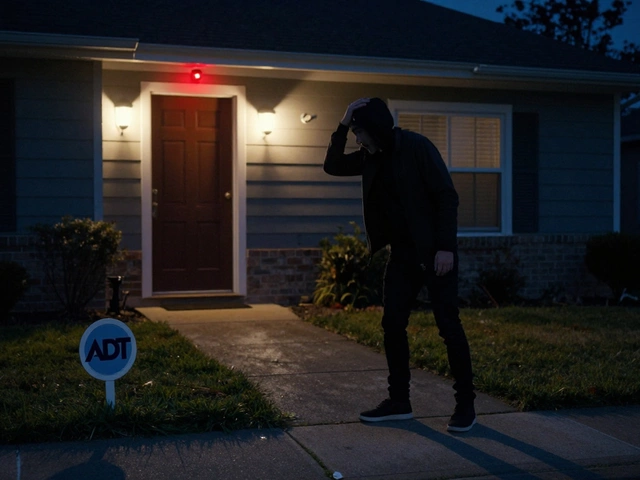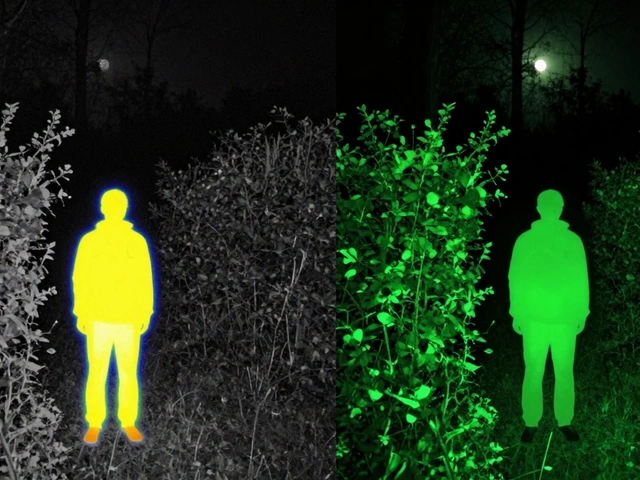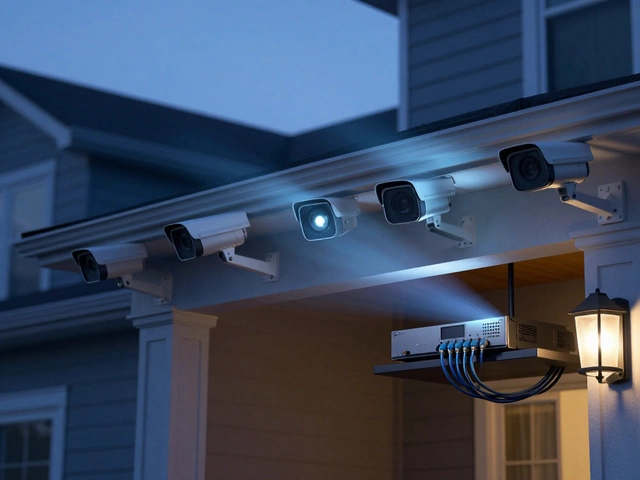Lots of new parents want to know when it makes sense to use a baby monitor. Is it overkill right from the start? Or will you suddenly realize you should’ve bought one months ago? Turns out, timing really matters—and it can make your life way easier if you get it right.
Most parents set up the monitor before bringing the baby home. It gives peace of mind, especially in those early newborn weeks when you’re counting every rise and fall of that tiny chest. But not everyone rushes into it. Some folks wait until the baby moves into their own room. There's no one-size-fits-all answer, but there are clear benefits (and downsides) at different ages.
Let’s walk through real-life timing and what parenting experts actually recommend—plus a few things nobody warns you about until you’re knee-deep in dirty diapers and Amazon reviews. By the end, you’ll know what works, what doesn’t, and how to spot the right moment for your own family.
- Why Age Matters When Using a Baby Monitor
- Starting Early: When and Why to Begin
- The Toddler Years: When Does a Monitor Become Less Useful?
- Signs It's Time to Pack It Away
- Tips for Choosing and Using a Monitor Smartly
Why Age Matters When Using a Baby Monitor
A baby monitor isn’t just another gadget—it’s all about knowing when it actually helps you, not just when you think you should have it. Age makes a big difference because babies’ needs (and your worries) change fast during that first year and beyond.
Newborns and infants can’t let you know if they’re in trouble. In the first six months, the risk of SIDS (sudden infant death syndrome) is highest, which is why a lot of parents swear by monitors during this time. Baby monitors, especially those with movement and breathing sensors, can help keep you informed when you’re not in the same room.
| Age Range | Why Use a Monitor? |
|---|---|
| 0-6 months | Highest risk for SIDS, frequent night wakings, need for reassurance |
| 6-12 months | Baby starts rolling/crawling, parents watch for standing or climbing attempts |
| 12-24 months | Toddlers can stand or try to get out of crib; monitor for safety (not just crying) |
| 2+ years | Usually monitor becomes less critical as child gains independence |
But it’s not just about age. Some babies transition to their own rooms at 4 months, others at 12. Night feedings drop off at different times too. What really matters is matching the monitor to your kid’s current stage—and adjusting when things change.
One stat that always surprises people: by 18 months, most kids sleep through the night, and studies show around 60% of parents stop using audio monitors before their child turns two. That’s because once your kid can call for you, the monitor tends to add more parental anxiety than real benefit (nobody needs to hear every sigh or snore at 2 am).
If safety is your top priority—which, for most people, it is—pay close attention during those early months. But don’t feel guilty about packing away the monitor once your child is more independent. The most important thing is how much the baby monitor helps you sleep easier at each stage, and when it starts doing the opposite.
Starting Early: When and Why to Begin
If you’re debating when to break out that fresh-from-the-box baby monitor, most parents start using one from day one—or at least the first night at home. It makes sense, especially if you’re not room-sharing 24/7. Being able to see or hear what’s up can seriously calm your nerves when those middle-of-the-night cries hit. According to the American Academy of Pediatrics, most babies spend the first 6 months in their parents’ room, and a monitor gets extra handy once you move your baby to a separate nursery, around 6-12 months old.
Lots of folks use the monitor way before that. Newborn sleep is unpredictable, and sometimes you need to step out of the room to make a coffee or just collapse on the couch. A simple audio or video monitor lets you keep an ear—or eye—on things without hovering bedside all day.
There are specific reasons for starting early with a monitor:
- Peace of mind—especially for new parents worried about SIDS (Sudden Infant Death Syndrome).
- Monitoring naps, not just night sleep, so you can move around the house.
- Tracking newborn patterns. Some smart monitors even keep logs of how long your baby sleeps, how often they wake, or what fusses them.
If you’re the kind of parent who likes data, a lot of modern monitors track stuff like room temperature, oxygen levels, and movement. But not all extra features are useful (or necessary). There’s definitely a tech temptation to buy the fanciest model, but the basics—audio and video—work for almost everyone.
| Baby's Age | Using a Monitor (%) |
|---|---|
| 0-3 months | 93% |
| 4-6 months | 89% |
| 7-12 months | 83% |
| 13-18 months | 68% |
This table shows most parents use monitors heavily in the first year, with use tapering off once babies become toddlers.
If you’re still on the fence, remember: a baby monitor can help you rest a bit easier knowing you’re never too far from your kid, even if your coffee mug begs to differ.
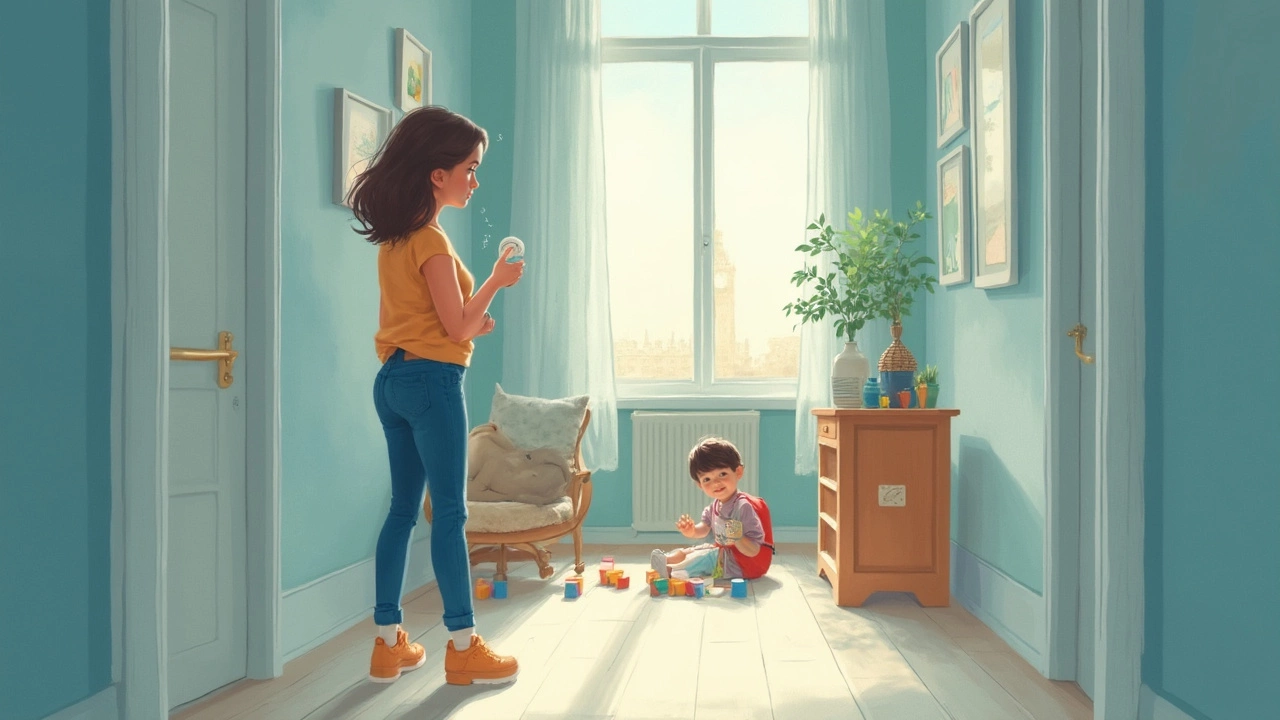
The Toddler Years: When Does a Monitor Become Less Useful?
If you’ve made it to the toddler stage, you’re probably noticing a big shift in how you watch over your kid. By 18 to 24 months, most toddlers are sleeping through the night (well, most nights), and a baby monitor starts to feel more like a habit than an actual necessity. It’s not just about age—it’s about how much your toddler needs constant nighttime monitoring.
At this point, they can usually stand up by themselves, call out if they need you, and might be able to climb out of a crib or bed. The monitor isn’t really there for those little sounds anymore. Instead, it becomes more about keeping tabs during sick nights or big sleep transitions, like moving from a crib to a toddler bed.
There’s actually some solid data out there. According to a 2023 sleep study published by the National Sleep Foundation, 72% of parents stop using monitors between ages 2 and 3, right as their kids start to master speaking, walking, and demanding water at 3 a.m. Here’s a snapshot from recent surveys:
| Child's Age | % Parents Still Using Monitor |
|---|---|
| 0-12 months | 95% |
| 13-24 months | 82% |
| 25-36 months | 28% |
| 37+ months | 7% |
The main thing to look out for? If your toddler’s sleeping habits are predictable or their room is close enough for you to hear them, that monitor is probably ready for retirement. Plenty of parents keep using video monitors as a “just in case” habit, but you can usually trust the volume of a toddler tantrum to alert you if they really need something. Also, leaving the monitor on too long can mess with your own sleep—studies show lots of parents actually sleep lighter and wake up more often because of background sounds picked up by monitors.
If you’re still on the fence, think about why you’re using it. Is it actual need, or just old habits? Sometimes, it’s easier to test a few nights without it and see if you’re less stressed or more tired. You’ll know pretty fast if your house is better off unplugged.
Signs It's Time to Pack It Away
It sneaks up on you: one day, you’re glued to the monitor screen, then suddenly, it’s mostly just collecting dust. The truth is, kids outgrow baby monitors—and there are some clear indicators that it’s time to put it in the closet.
Here’s a look at what signals the right moment for most families:
- Your child is sleeping through the night on a regular schedule, and you’re not waking up for midnight check-ins.
- Your kid is vocal and mobile. If they’re yelling “Mom!” or “Dad!” in the morning, the monitor becomes kind of pointless.
- You notice yourself checking the monitor more out of habit than real need.
- The monitor makes you anxious instead of helping—some parents say it fuels unnecessary worry once their child is out of the newborn stage.
- Your child is old enough to ask for privacy. By age 3 or 4, most kids want personal space, especially if potty training is done and they sleep in a regular bed.
The American Academy of Pediatrics doesn’t give an official cutoff age, but most pediatricians suggest that by age 3, typical healthy sleepers don't need a monitor. Here’s what Dr. Amanda Stovall, a pediatric sleep specialist in Texas, says:
“If your child is sleeping in a toddler or regular bed, can easily call for you, and there haven’t been any health concerns, you’re probably safe to put the baby monitor away.”
Still, every household moves through this phase differently. Sometimes, it's about what keeps parents calm more than the child’s actual needs. A quick way to gauge if you’re holding onto it for peace of mind or real necessity? Make a list of recent times the monitor actually helped you intervene. If you’re coming up empty, it’s probably safe to unplug.
Take a look at when most parents retire the monitor:
| Child's Age | Percent of Parents Who Stop Using Monitor |
|---|---|
| 12-18 months | 38% |
| 18-24 months | 28% |
| 2-3 years | 24% |
| After 3 years | 10% |
The key: trust your own comfort level. If the monitor starts feeling more like a nag than a help, you probably won’t regret letting it go. For most families, this happens sometime between your kid’s second and third birthday. But hey, if it’s still giving you peace of mind, there’s no shame in keeping it a little longer.
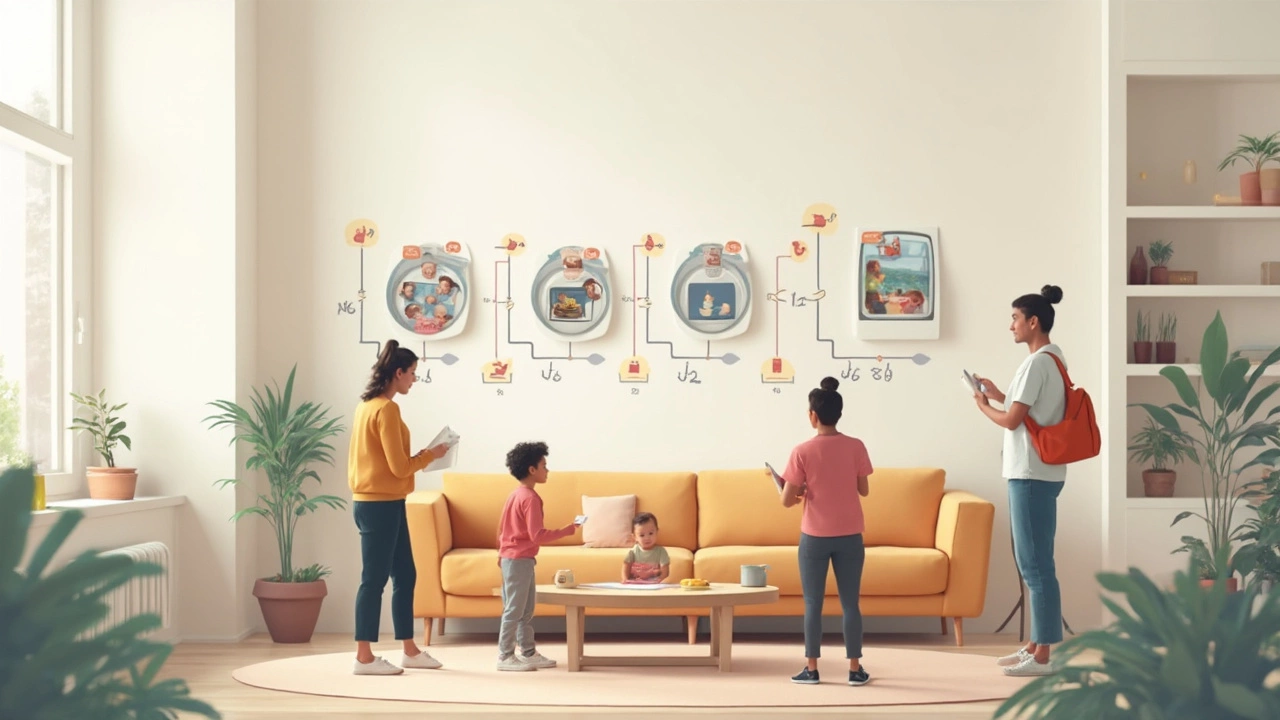
Tips for Choosing and Using a Monitor Smartly
Picking a baby monitor is a big deal, but that doesn't mean you need to get buried under piles of feature lists. Focus on what actually makes your nights easier (and safer for your little one). Most parents just want reliable sound and video, but let’s break it down.
- DON'T overcomplicate it: Fancy features like lullabies or temperature tracking sound nice, but most families rarely use them. What really matters? Good range, clear audio, and a dependable battery.
- Privacy comes first. Simple WiFi cameras are everywhere, but anything that streams over the internet can be hacked. If you go WiFi, change the default passwords. If that freaks you out, stick to non-WiFi monitors—they can’t be accessed from outside your home.
- Watch the return policy. Babies sometimes hate things you spent weeks researching. Make sure you can take it back if it doesn't fit your routine.
- Get a monitor you can mute or turn the screen off. No one wants a glowing screen blinding them at 3 a.m., but you still want to keep an ear out for those rare middle-of-the-night yells.
- Check the monitor’s battery stats—some die in less than four hours. With most parents averaging 6–8 hours of usage overnight, anything under that will just stress you out.
John Walsh from Consumer Reports sums it up:
"A good baby monitor should work like smoke detectors—you notice it only when you need it, and the rest of the time, it just quietly does its job."
To help spot the non-negotiables, check out this quick cheat sheet:
| Feature | Why It Matters |
|---|---|
| Clear Audio | Catches even tiny coughs and cries, which could signal problems |
| Long Battery Life | Lets you run it overnight without waking up to a dead monitor |
| Good Range | Covers all corners—no dead zones upstairs or out in the yard |
| Privacy Controls | Keeps your footage secure, especially with smart/WiFi models |
| Easy Mute/Screen Off | Gives flexibility, so you’re not woken by every little noise or bright screen |
One last tip: keep an eye out for recall alerts, especially because new parents rarely think twice after plugging in. The CPSC recorded eight baby monitor recalls in the last six years, mostly for overheating or battery issues. You’d be surprised how many folks just stick with whatever was on the baby registry rather than what actually works for their space.
Getting the baby monitor right can free up a lot of headspace—and let’s be honest, most of us need all the extra focus we can get during those crazy months.

